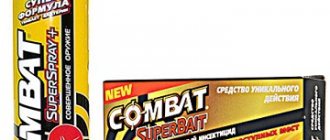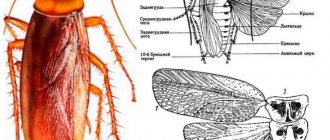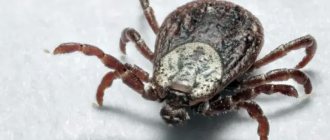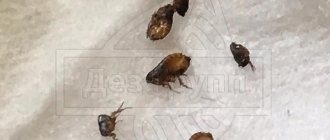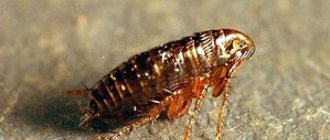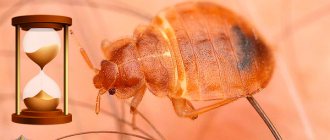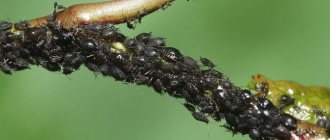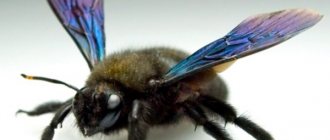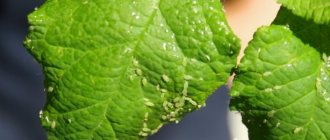Many varieties of garden bugs live in garden plots. Entomologists call many harmful and beneficial insects by the general term – stink bug. Representatives of different species differ in body shape and color.
Shield bugs are the most numerous species of bugs. The family unites over 4,000 subspecies, bringing both benefit and harm. Some beneficial representatives are specially bred to destroy agricultural parasites.
Benefits and harms of garden shield bugs
Shield bugs settle in estates where they cultivate various crops. Some greatly harm the plants they grow, while others, on the contrary, help amateur gardeners and gardeners by destroying parasitic insects.
Shield insects damage the foliage and young shoots of berries, fruits, vegetables, cereals and other crops. Having pierced the skin, the parasites suck the juice out of them. Brown spots appear in places of damage, causing the death of foliage and shoots. Castings of cabbage, pears, apples, cucumbers, and radishes are a favorite delicacy of stink bugs.
- Berry stink bug. The smell it leaves upon contact is both sickly sweet and incredibly disgusting. An insect with a striking color (rich burgundy, brownish-brown and grayish-yellow shades), living in estates with fruits, berries, oilseeds, grains and other crops.
- The shield bug is a harmful turtle. This garden bug is the worst enemy of farmland nationwide. Through their fault, tens of thousands of tons of grain are lost every year. Having attacked a personal plot, they are capable of destroying from 25 to 100% of young fruit trees.
Pests must be eliminated using effective methods. Beneficial bugs – predatory stink bugs – help fight pests. They get rid of caterpillars, aphids, and Colorado potato beetles. That is why amateur gardeners need to know what parasitic insects and helpers look like.
Lifestyle
In winter, the wood bug remains in a state of suspended animation. For wintering, the insect chooses a reliable shelter: fallen leaves, stones, forest litter or rotten wood. With the onset of spring, the shield bug wakes up and begins to look for a mate for procreation. During the hot season, the bug only sits on the branches of bushes, feeds and gains strength for the winter.
Shield insects have very short and weak wings, and to fly the insect requires a lot of effort and expends a large amount of energy. Therefore, bedbugs fly very rarely and reluctantly, only in cases when they need to get to a new food source or protect themselves from enemies. Fleeing does not always help bedbugs in case of danger, so they have developed another defense mechanism. Shield insects are able to secrete a special secretion with an unpleasant odor that repels predators. This is why the tree bug is popularly known as the stink bug.
Appearance of garden bug pests
There are many varieties of stink bugs that parasitize cultivated plants. Certain populations harm fruit and berry plants from the moment they sprout from seeds. Other parasites have adapted to feed on the juices of wild vegetation. However, if there are areas planted with crops nearby, they instantly move to them.
- Green forest shield . In everyday life, the insect is known as the garden green bug. In the wild, it feeds on the sap of trees and shrubs that form forests. In addition, he is not averse to eating cultivated plants. First of all, parasitic individuals capture raspberries (hence another popular name - raspberry bug), and then spread throughout all the plants in the garden, causing damage to the crops.
- Cruciferous bug . This is a rather harmful representative of shield insects. Northern Eurydema (as entomologists call this most dangerous parasite) is very similar in appearance to the soldier bug. The parasite causes enormous damage to crops from the cruciferous family. Insect infestations lead to the complete death of plants.
- Pear bug . The insect amazes with the beauty of its “lace outfit,” causing the admiration of people who do not know about its true nature. It is insidious towards pears, apple trees, apricots, plums, cherries and other fruit trees. Hordes of parasites can destroy both fruits and trees.
- Berry shield . Parasites pose a danger to most fruit and berry plants. These bugs are found on currants, raspberries, gooseberries and other fruit-bearing bushes.
- Cucumber bug . The individuals are quite small - the body length is only 3 mm. But the damage caused to cucumbers, tomatoes, eggplants and peppers is great. The bottom of leaves is a favorite habitat for parasites. It is difficult to fight agile shield creatures. They jump long distances and instantly infect greenhouses regardless of size.
- The shield bug is a harmful turtle . The classic variety of this bug is not dangerous for homesteads. Their main food is cereals. They cause harm in gardens and orchards when there is a shortage of grains. Hungry bugs in garden plots eat everything.
- The horse fly bug is a tiny pest with an inconspicuous appearance. It parasitizes almost all garden crops. The horsefly bug is the scourge of farms.
- Ringed predator . The abode of this bug is apiaries. The pest hunts bees, lying in wait for them in the inflorescences of honey plants.
What are the features of appearance and structure
The body of the shield bug is flattened from above and below. The body has 5 segments. The top has:
- triangular head;
- prothorax with pointed corners;
- shield;
- dense fenders;
- membranous wings.
The lower part is also divided into 6 segments. The spiracles are located along the edges. The insect has special glands necessary to secrete a substance with a pungent odor. This is necessary to scare away enemies and attract females.
It is wood bugs that emit the most pungent odor among their relatives. The insect marks its territory with a scented substance. It is a deadly poison for some insects. The mouthparts are piercing-sucking. There is a pointed proboscis.
Wood bugs can produce a very strong odor
An insect can be either carnivorous or herbivorous. This directly depends on where you live. It is with the help of the proboscis that the bug pierces leaves and fruits. The stink bug is attracted to raspberries. If it is absent, other shrubs may occupy the garden plot.
The insect can feed on dead small organisms. The shield insect injects enzymes into the food object. This makes the process of eating food easier.
Wintering is carried out close to food. The green bug hides under fallen leaves. The forest representative climbs under the bark of trees. The bug becomes active after the onset of spring. The insect comes out in search of food after warming.
There are large compound eyes on the shield's head. Closer to the shield there are two simple eyes. The insect also has long whiskers. The shieldfish is excellent at camouflage. This is possible thanks to the ability to adapt to environmental conditions.
Read on topic:
How to recognize an allergy when bitten by a bug and what to do
03.07.2019
How to identify a water strider from a photograph
25.06.2019
What do predators look like and what is their danger?
20.05.2019
Is it possible to use spells to get rid of a bedbug?
16.05.2019
Are garden bugs dangerous for people?
It is assumed that all species of shield insects, whose range covers Russian lands, are incapable of causing harm to people. They have soft proboscis, unsuitable for piercing human skin.
But despite this, cases have been recorded of stink bugs biting people. It is not yet clear to scientists whether there are mutants among the garden bugs that managed to interbreed with bed bugs, whether they bit people or were confused with other insects. For now, such bites are considered exceptional cases.
Triatomine bugs, inhabitants of farmland located in the tropics, harm not only plants, but also mammals, including humans. These parasites carry Chagas disease, a life-threatening disease.
What chemicals are effective?
Chemicals are used as a last resort when other methods have failed. This is due to the fact that residues of the substance will accumulate in the soil and plants.
Experts recommend giving preference to the drug Actellik. This is a universal long-acting remedy. After entering the body of an insect, it destroys the nervous system. The performance of all internal organs is inhibited. This leads to the death of the representative. When processing, you need to wear gloves, a protective suit and a respirator.
To combat bedbugs you can use Actellik
Another effective drug is Vantex. The product has a contact-intestinal effect. The medicine is low toxic. Does not harm plants when used correctly. The main advantage of the solution is moisture resistance. The poison continues to act even after rain or other precipitation.
Variety of colors
Shield insects differ from their counterparts by a characteristic feature - bright coloring. The Italian stink bug has a striking, stylish “outfit” – a deep orange body with black stripes and specks. The boy stink bug, which parasitizes plants, has an intricate coloring.
The red-legged stink bug is a two-faced beauty capable of destroying both pests and plants. The top is dark brown with a green and bronze sheen, the abdomen, paws and mustache are reddish. The body of the earth shield is painted in a luxurious black color with a silver tint.
Instructions for use of drugs
All gels, ointments and creams are applied directly to the bite sites, but you should still read the instructions.
Not every drug is indicated for children, and the use of some requires medical supervision. Fenistil is used externally and applied to bite marks 2-4 times a day. The gel should not be used by children under 1 year of age. Pregnant women in the first trimester are allowed to use the drug only after consulting a doctor. Psilo-balm is applied in thin layers to previously cleansed skin, rubbing in lightly. It is prescribed to apply the drug 3-4 times a day. During the therapy period, it is prohibited to take sunbathing, as well as take medications or drinks that contain ethyl alcohol. Elidel is applied in a thin layer to the affected surface 2 times a day, rubbing until completely absorbed. Do not apply immediately after a parasite bite. The drug is not contraindicated for children older than three months.
Bepanten is applied to the affected surface and lightly rubbed. The procedure is carried out 1-2 times a day. Can be used even on the delicate skin of newborns. Suitable during lactation and pregnancy.
Cikaderma is contraindicated for children under one year of age. For children over one year old and adults, it is recommended to apply the drug to a pre-treated wound 1-2 times a day. If necessary, apply a bandage. Duration of use - no longer than 7 days.
Erythromycin ointment is used 2-3 times a day. The drug is well tolerated, but may have a moderate irritant effect.
Predatory bugs - helpers in personal plots
Any predatory bug helps a person in the fight against parasitic insects. Unfortunately, their merits are practically unknown. A negative attitude towards fellow pests is automatically transferred to beneficial garden bugs. A person who sees predatory bugs has a feeling of danger and disgust.
- Perillus bicentennial bug . These insects are excellent destroyers of larvae and mature Colorado potato beetles. Their abode is North American lands; they could not take root in the vastness of Russia. True, several small populations have settled in the Krasnodar region.
- The Picromerus bug successfully destroys harmful caterpillars, as well as their larvae. He is an inveterate enemy of sawflies, Colorado potato beetles and cutworms. The habitat of the shield bug extends across the territory of European countries, affecting the western lands of Russia.
- Shield insect Posidus is a useful species of garden insects. Entomologists are specially engaged in its breeding. Adults are released in the spring onto farmland sown with cultivated vegetation. Pozidus is a sissy, he is not able to survive in the cold Russian winters.
What is the reproduction and development cycle?
Before mating, the male circles the female and touches her with his antennae and head. For fertilization, the insect inserts its genital organ into a special hole on the body. Seminal fluid is used as needed.
The female lays eggs, which hatch into small larvae
If conditions are favorable, the female lays eggs twice per season. Each clutch contains 100 eggs. The shell has a light green color. Young individuals are deposited on leaves.
After 15 days hatching will occur. The larvae have an incomplete metamorphosis cycle. Practically no different from imago. Immediately after emerging, the worm begins to actively feed.
The larvae go through 4-5 molts. The color of the chitinous cover changes as it matures. The entire development cycle takes 1-2 months, depending on the subspecies.
It is interesting to know that this bug is used to prepare a tincture to combat alcoholism. In this case, the addicted person develops a gag reflex and an aversion to alcohol-containing drinks.
Only after all the molts do the insects develop wings. The insect rarely flies. Uses wings only when absolutely necessary. Occasionally the representative travels long distances. A dark spot appears at the puncture site of leaves and berries.
This video talks about one of the subspecies of shield bugs:
Soldier bugs
The soldier bug is a famous vegetable and garden bug. The ability to live in colonies, the bright characteristic color and the habit of basking in the sun does not allow the insect to go unnoticed. The red bug is not dangerous to people.
Single individuals are harmless for gardening and farming. Only hordes of these insects harm crops. Decaying fruits and plants, dead insects are the basis of the soldiers’ diet. They feed on leaves and shoots of fruit and berry trees (especially grapevines) when there is a shortage of basic food.
How harmful is the parasite?
Some insects negatively affect the plants they live on. The representative eats leaves and fruits, leaving behind brown marks. When stink bugs invade, the entire crop can be destroyed. Favorite treat: raspberries.
Bed bugs love raspberries
The insect leaves an unpleasant odor from the glands on the berries and leaves. With a lack of glands, the insect switches to agricultural crops, namely cereals. Often a representative lives in an apartment.
When an insect enters an apartment, it does not harm residents. The only negative is the unpleasant aroma from the parasite.
Methods for controlling garden bug pests
Garden pests are controlled using agrotechnical and chemical methods.
Plants are treated with insecticidal preparations belonging to the category of pyrethroid or organophosphorus agents. Chemicals are sprayed on both sides of the foliage. Actara products are often used. The drug has a selective effect - it effectively destroys pests without causing damage to beneficial insects.
Agrotechnical control methods are traditional. In the fall, they remove fallen leaves - a place where parasites accumulate for a successful wintering. Plow the row spacing or the entire area completely. Scented plants are planted. Many pests cannot tolerate the smell of cohosh, which is often planted in gardens and vegetable gardens.
Is it necessary to fight
The fight should only begin when necessary. If there are several beetles in the house, it is enough to collect them and take them outside. Active control should begin when the pest appears in the garden plot. Treatment with pesticides will be required. If this is not done in time, the crop will be destroyed.
Factors that increase the risk of a beetle entering a home include:
- attraction by artificial light;
- enduring a natural disaster;
- accidental ingestion with fresh fruits and vegetables.
You can bring the insect with vegetables and fruits
Where does the bad smell come from?
Stink bugs have special glands that produce a special substance with an unpleasant, repulsive aroma. As a rule, the basis of such substances in forest bugs is cymic acid. Plus, these glands are multifunctional, secreting a substance of varying concentrations that can serve:
- As a weapon to repel natural enemies.
- As a substance to attract a sexual partner.
- To scare off their competitors (males).
- As a substance that helps to navigate in space.
- To find food for yourself.
If you take a bug and crush it, a strong disgusting odor will appear that can linger in the air for a long time. For forest bugs, such secretions are an effective weapon for self-defense. When a bug senses an approaching threat, its glands begin to actively secrete a stench. If an insect is crushed, the stench will intensify many times over. The natural enemies of stink bugs understand this very well, so they avoid them. As for humans, such aromatic substances do not pose any danger to them.
Almost all representatives of this insect species are capable of producing various aromas, the intensity of which depends on the specific subspecies of the insect. The following insects can demonstrate the ability to reproduce aromatic substances:
- Shieldweed (two-toothed, berry, red-legged, green and striped).
- Northern cruciferous bugs.
- The turtle is harmful.
- Water striders.
- Belostoma.
- American stink.
The well-known soldier bug, as well as the birch bug, are capable of secreting a special liquid that has a certain aroma. It should also be noted that many insects that managed to get into a person’s home can emit various aromas, although their intensity is not as high as that of stink bugs.
Brown marmorated bug (Halyomorpha halys)
Watch this video on YouTube
Red-black striped stink bug or striped graphozoma. Video (00:00:55)
This bright bug is hard to miss, because its body is covered with contrasting black and red stripes. They gave him all sorts of names for this: tiger bug, striped bug, Italian bug. But in scientific terms it is called lined shield or striped graphozoma, and in Latin, then Graphosoma lineatum. It would seem that what is Italian about this bug? Quite an ordinary domestic bug. The fact is that its coloring is somewhat reminiscent of the colors of the ceremonial uniform of the Vatican Guards - the famous Swiss Guard, the guards of the Pope. This bug has all the characteristics that make it a member of the shield bug family: first of all, this is, of course, the scutellum - a durable chitinous plate of the mesothorax, shaped really like a shield. And it performs the same function - it protects the vulnerable parts of the bug’s body (abdomen, wings, internal organs) like the shell of a turtle. A triangular head and 6 black stripes on a red background, as well as black spots on the underside of the abdomen are also distinctive features of this bug. It is not for nothing that people use such coloring as a warning of danger; this technique is borrowed from nature. Unlike other bugs that try to hide against the background of leaves, graphozoma, on the contrary, tries to be as noticeable as possible. It seems that such behavior should be dangerous for the life of the bug? But it is poisonous and warns all birds and insects about it in advance. It turns out that you can be safe not by hiding, but by deliberately exposing yourself. If this is not enough, the bug has another remedy - odorous discharge with a very unpleasant odor. Like all bugs, the scale insect has a sucking mouthpart in the form of a proboscis, with which it pierces and drinks plant juices. This type of bug prefers umbrella plants. It can often be found on dill seeds, it does not ignore parsley, carrots, and is often found on the ubiquitous weed with an umbrella of white flowers - squash.
The smell of other representatives
The smell of a bedbug depends on its type:
- Green. They are most often found on raspberries. If you pick and immediately try to eat a berry that a bug has previously chosen, the unpleasant aftertaste will remain in the mouth for a long time.
- Turtle. Foul pheromones are also characteristic of this pest. This parasite especially strives to penetrate living spaces with the arrival of the cold season. It harms agricultural supplies. When it is caught, it is often crushed, so the aroma becomes even more pronounced.
- Tree shield. He lives mainly in the forest. It is characterized by a bright combat color, which effectively repels pests. And with minor anxiety, it immediately releases a substance with a persistent aroma containing poisons. It is capable of paralyzing the victim. If the enemy is a bird, it opens its beak and releases the insect.
They all emit aromas ranging from unpleasantly cloying sweet to bitterly rotten.
Sources
- https://Vladimir-SES.ru/klopy/kak-pakhnut-klopy
- https://Dezoff.ru/klopy/zapakh-klopov/
- https://parazitdoma.ru/klopy/chem-pahnut-klopy
- https://misterklop.ru/klopy/samyj-vonyuchij-klop-i-sposoby-vyvedeniya-zapaha-iz-zhilya
- https://klopy.geradez.ru/zapax-ot-klopov-ru
- https://xklop.ru/klopy/opisanie/pochemu-klopy-vonyayut.html
- https://netzhukam.ru/klopy/o-postelnyh-klopah/pahnut-li-domashnie-klopy.html
- https://apest.ru/klopy/vse-o-klopah/pochemu-klopy-vonyayut/
Read more about scale insects on currants.
The appearance of this pest on currants is fraught with slower growth and development of the bush, drying out of the foliage, loss of yield and death of the entire plant.
The size of the scale insect is very small, so it is sometimes difficult to detect the pest in time. The length of the scale insect does not exceed 4 mm, and it usually settles on the underside of the leaf or at the junction of the leaf and the stem. If you find small spots on currants, take a closer look at them, because this is how the scale insect “camouflages itself.”
The probability of damage to currant plantings by scale insects is quite high. The insect is easily carried by the wind and carried by animals. Infection can occur from poor-quality planting material or soil substrate.
This pest feeds on the sap of plants, interfering with their life processes; the insect draws out nutrients, depriving the bush of the forces necessary for growth and development. This parasite is quite dangerous; in a couple of years the scale insect can destroy large-scale currant plantings.
An important preventive measure to prevent the pest from multiplying is hilling the plant. Shrubs should be earthed up in the fall, making small earthen mounds. In the spring, after the snow melts, the soil must be removed.
If a scale insect is detected, the bushes must be immediately isolated. For these purposes, you can use polyethylene film. Shrubs growing in the neighborhood should be very carefully inspected and the same measures should be taken if insects are detected.
When treating bushes with various solutions, it should be remembered that it will be difficult to remove adult insects in this way, since their body is reliably protected by a rather dense shell. Therefore, you will most likely have to remove them from the bush manually. Using a sponge and a thick soap solution, you need to treat every leaf and shoot of the infected plant. This is a very labor-intensive task, but necessary. In this case, there is no need to rush, otherwise those insects that you did not remove will soon multiply and colonize neighboring shrubs, increasing the affected area.
If this does happen, in order to save the bushes, you will have to use chemical insecticides. The most effective against scale insects are neonicotinoids - a small class of organic compounds that, upon contact with insects, cause paralysis and death. These insecticides include Mospilan, Colorado, Aktara, Tanrek .
Treatment is carried out by spraying with a working solution prepared in accordance with the instructions for use of these drugs. To destroy the pest, more than one treatment will be required, since, in addition to adult individuals, the bush usually contains insect larvae or eggs. Only after repeated treatments can one count on preserving the shrub.
In addition to the above insecticides, hormonal and organophosphorus preparations can be used in the fight against scale insects, including: Pyriproxyfen, Iskra, Kemifos , etc.
The number of treatments should also be at least three, with a frequency of no more than one week.
When using chemical insecticides, it is important to remember safety precautions. People suffering from allergic diseases or bronchial asthma should not use such drugs at all. You also need to remember that the substances included in insecticides can be harmful to bees.
In this case, you can use folk remedies to combat the pest. Next, we will consider the most effective of them.
Natural enemies
Unfortunately, garden bugs do not have a natural killer. Birds do not peck this insect because of the disgusting, stinky odor that resembles a mixture of skunk and cilantro. Of all the birds, only ducks can tolerate the stinking smell of the beetle and peck at it. Chickens that eat stink bugs become inedible because their meat stinks.
INTERESTING
The killer of stinking insects is the locust.
Wasps can also kill these pests. But there is no point in such helpers: locusts cause even more harm than stink bugs, and wasps parasitize on the eggs of stink bugs, preventing their intensive reproduction. But the next problem after stopping the garden bug infestation will be getting rid of the wasps.
Uninvited Aliens
The wood bug (also known as the stink bug) cannot cause any harm to humans. Moreover, he always tries to stay away from crowded places. Large-scale invasions of individuals of this species into human habitation have not been observed. Their natural habitat is shrubs, trees, fruits and cereals.
A representative of a species that accidentally flies into an apartment, the harm from which can only consist of an unpleasant odor, can easily be kicked out the door. The bite of such an insect does not threaten a person with anything. If trees or shrubs grow near the window of your home, then it is possible that several insects with a shield-shaped back will appear as a guest. In this case, an ordinary mosquito net will be an effective salvation.
The bites of bed bugs, which feed exclusively on one’s blood, and the causative agents of infectious diseases cause great trouble to humans.
How to avoid infection?
To avoid having to do the things described above, it’s easier to follow 2 simple rules that will prevent bedbugs from settling in your underwear and clothes.
- Avoid contaminated areas. Do your friends or relatives have bed bugs? It is better to hold off on visiting until the pest control has been carried out. On vacation and business trips, carefully inspect your hotel room for parasites. A heavily infested room may produce a characteristic bedbug odor.
- If a visit to the bedbug infestation cannot be avoided, then you should use perfume. By wearing plenty of perfume, you will camouflage your clothes from blood-sucking insects. The brand is not important - bedbugs equally dislike triple cologne and Chanel number 5.
If there are bedbugs in your apartment or house, you need to quickly carry out disinfestation using a high-quality insecticide. This is the only way you can protect yourself and your loved ones.
Notes
- ↑ 1 2 3 Kanyukova E.V. Family Acanthosomatidae - Tree insects // Key to insects of the Far East of the USSR. T. II. Homoptera and Hemiptera / under the general heading. ed. P. A. Lera. - L.: Nauka, 1988. - P. 912-915. — 972 p. — 1950 copies. — ISBN 5-7442-0921-2.
- ↑ 1 2 Vinokurov N.N., Kanyukova E.V. Hemipteran insects (Heteroptera) of Siberia. - Novosibirsk: Science, 1995. - P. 191-195. — 238 p. — ISBN 5-02-0306069-0.
- ↑ Annotated list of rare and endangered species of invertebrate animals, specially protected within Russia // 2003* Russia* Red List of Specially Protected Rare and Endangered Animals and Plants. (2nd issue). Part 2. Invertebrate animals (Red Book Bulletin, 2/2004 (2008)) / rep. ed. V. E. Prisyazhnyuk. - M.: Red Book Laboratory of the All-Russian Research Institute for Nature Conservation, 2004 (2008). - P. 149. - 512 p. — ISBN 978-5-9243-0158-7
- ↑ 1 2 3 4 5 Family Acanthosomatidae - Shield Bugs (English)
- ↑ Henry TJ Biodiversity of Heteroptera // Insect Biodiversity: Science and Society / Foottit RG, Adler PH (Eds.). — 2nd Ed. - Oxford: Wiley-Blackwell, 2022. - pp. 279-336. — 904 p. — ISBN 978-1-118-94553-7.
- ↑ Profil taxonu čeleď knežovkovití Acanthosomatidae Signoret, 1863 (Czech)
Reasons for appearance
For a long time there was an opinion that dangerous insects only appear where there is dirt and poverty.
In recent years, the situation has changed: parasites often appear in the homes of wealthy people, where they are clean, rich and comfortable. The reason is multiple ways pests can enter your home.
It is important to know what points to pay attention to so as not to accidentally bring biting insects home. .
Unpleasant “neighbors” appear in your home in different ways:
- with new furniture purchased in the salon. If harmful insects lived in the furniture sales center, they will calmly “move” to new owners,
- crawl from other apartments through chokes, enter open windows,
- along with purchased antiques. Antique books, paintings, furniture are a good refuge for biting insects,
- when buying clothes at a flea market. Sometimes parasites remain in worn things, the new owner of a blouse or sweater learns about the existence of “neighbors” only by painful bites,
- after the trip. If there were bedbugs in an inexpensive hotel, there is a high risk of bringing the parasites home among your belongings.
